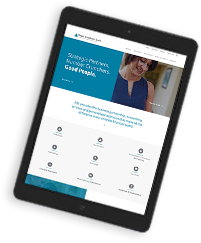By Deepa Bhat, CPA, CFE, ACA, Assurance & Advisory Principal
Sometimes, even the most thought-out plans don’t work out. Organizations experienced this first-hand over the last two years with COVID-19. Almost overnight, everything changed: operating models, financial forecasts, and the labor market, to name a few of the biggest impacts. Even now, many Bay Area and California companies are grappling with the effects of an uncertain economy. External events, like the pandemic, have the potential to upset the typical financial reporting process. Questions remain about how to reflect external pressures on internal reporting; what needs to be adjusted and when, and how management can best respond to changing conditions while still meeting current compliance requirements. In other words, the pandemic and other events have made it difficult for management to make essential estimates required for financial reporting. Here are some key factors to consider during this time of uncertainty. (more…)
By Deepa Bhat, CPA, CFE, ACA, Principal
Starting in January 2023, businesses must conform to a new accounting standard for measuring expected credit loss. It’s perhaps one of the biggest accounting changes for financial institutions in a decade – but they’re not the only ones affected. Nonfinancial institutions may still have financial instruments and other assets that will require a different accounting approach and new internal controls. Implementing the current expected credit loss (CECL) accounting methodology takes a forward-looking approach to risk modeling and will be a significant undertaking for many. (more…)
Companies often need financial audits when they seek additional funds or have to satisfy the requirements of owners, creditors, investors and other outside parties who want a higher level of comfort on the accuracy of financial statements.
My experience auditing privately held companies has taught me that a few proactive measures can go a long way in avoiding audit delays, keeping you and your auditor on track, and ensuring a smoother audit process for all. So, let’s jump right into those tips, shall we? (more…)
As we enter into another audit busy season, I have started my standard exercise of compiling a list of frequently encountered audit and accounting issues that require research, additional analysis and often times detailed disclosures and even material adjustments to my client’s financials. An oft-recurring theme is the existence of related party transactions and how such transactions are recorded and disclosed.
Below are a few frequently asked questions on this subject that merit our attention: (more…)
By Kay Filler, CPA, Principal
More specifically, FASB issued the final guidance on February 25, 2016, but it’s not required for private companies until 2020 for calendar year companies (although earlier adoption-starting now-is permitted). Sounds like a long way off, but not really when considering potential impacts of the dramatically different accounting model for everyday lease agreements.
New Lease Accounting Rules
But first, here’s a summary of key accounting and disclosure components of the new rules: (more…)
It is that time of the year again when I am working on audits of U.S. companies with significant international operations, either in the form of wholly owned subsidiaries or branch offices. And my observations while performing these audits have resulted in this compilation of common errors while accounting for foreign currency, recording translation adjustments and finally the culmination into consolidated financials.
Related party transactions seem straightforward. For privately-held companies, related party transactions are a fact of business, and they may seem totally harmless. However, recently related party transactions have caught my attention. My fellow blogger, Deepa Bhat, identified steps to reduce risks associated with related party transactions. But what about transactions that happen that seem such a normal part of business that no one thinks of them as related party transactions? And what’s the big deal anyways?…
Recently, I’ve come across various instances of related party transactions with several of my clients, such as stockholder notes to or from the company, a stockholder leasing office space to a company at favorable rates, forgiveness of compensation or reduced compensation for the initial startup period, and favorable credit terms to another entity with common ownership to name a few examples. And it worries me sometimes when companies enter into these transactions without thinking through the accounting ramifications, which can be problematic. What could the risks of related party transactions be?…
What is Benford’s Law? Given a large population of numbers, what percentage of the time would you predict each leading digit (1 through 9) would appear first in the list? After thinking through the ways this might be a trick question, most people would still guess that the probability for each would be close…about 11%. Well…apparently…

